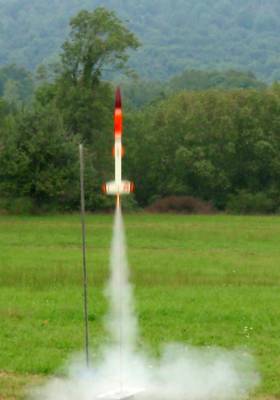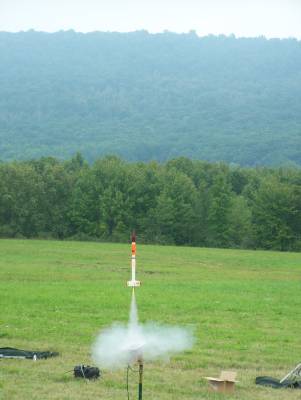The Viper: A '70s kit offered to Estes Aerospace Club (EAC) members. It uses T motors. It is a good, economical flier with parachute recovery. The small 12-inch parachute is a good choice for this rocket, since it is limited to A-power only. I wouldn't waste the time using 1/4A motors unless it's extremely windy or you have an extremely small field, the larger motors are so much more satisfying.
This particular Viper was painted with Purple and Orange instead of the Purple and Yellow. I suppose that was because I had orange dope and no yellow, but that was 35 years ago, who knows?
This rocket was later given my "Iris" modification, which extends the body tube about 5 inches above the streamer / parachute bay, and allows for a payload with an Altimeter One to measure altitudes. With it’s most powerful A motor, I can’t seem to get this above the 200-foot mark. (Iris is named after the Greek god of the rainbow. She is a messenger of the gods, linking the gods with humanity.) This rocket has flown higher than the Cape Hatteras Lighthouse in NC, the tallest lighthouse in the USA.
| Flight Date: | 2011-09-03 |
| Rocket Name: | EAC Viper |
| Kit Name: | Estes - E.A.C. Viper {Kit} (0820) [1972-1986] |
| Flyer's Name: | Rich DeAngelis |
| Motors: | A3-4 |
| Launch Site: | Fort Indiantown Gap, PA |
| Actual Altitude: | 176 Feet |
Good test flight. Perfect recovery. Launched to see how winds were behaving a few hundred feet up before I sent up higher flights. Winds were a bit breezy and erratic, so C-engine flights were scrubbed for the day.
| Stage | Motor(s) |
|---|---|
| 1 | Estes A3T-4 |
Sponsored Ads
 |
 |













